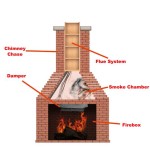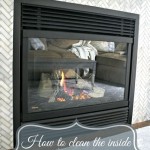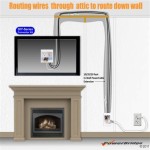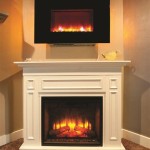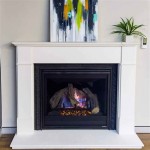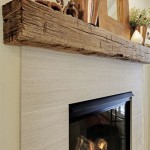Direct Vent Propane Fireplace With Blower: A Comprehensive Guide
Direct vent propane fireplaces with blowers offer an efficient and aesthetically pleasing heating solution for many homes. They combine the visual appeal of a traditional fireplace with the convenience and control of modern technology. This article provides a detailed overview of these fireplaces, exploring their features, benefits, installation considerations, and maintenance requirements.
Direct vent fireplaces differ significantly from traditional wood-burning fireplaces and other gas fireplace types. The "direct vent" designation refers to a sealed combustion system. This means that the fireplace draws air for combustion from outside the home through a coaxial vent pipe. Simultaneously, the exhaust gases generated during combustion are expelled through the same vent pipe system to the outside. This sealed system prevents indoor air from being used for combustion, resulting in a safer and more energy-efficient operation. In contrast, natural vent fireplaces rely on indoor air for combustion and vent exhaust gases up a chimney, which can lead to heat loss and potential safety concerns.
Propane as a fuel source offers several advantages. Propane, also known as liquefied petroleum gas (LPG), is a readily available and relatively clean-burning fuel. It produces fewer emissions compared to wood or oil. Propane fireplaces are also generally more efficient than traditional wood-burning fireplaces, converting a higher percentage of fuel into usable heat. Furthermore, propane can be stored on-site in a tank, offering homeowners greater control over their fuel supply, particularly in areas where natural gas service is unavailable or unreliable.
The inclusion of a blower further enhances the efficiency and effectiveness of a direct vent propane fireplace. A blower, also often referred to as a fan, is an electric component that circulates heated air from the fireplace into the room. This forced-air circulation improves heat distribution, ensuring that warmth is spread more evenly throughout the space. Without a blower, the heat from a fireplace tends to rise directly upward, leading to uneven heating and potentially leaving areas further away from the fireplace feeling cooler.
Understanding the Benefits of a Direct Vent Propane Fireplace With Blower
There are numerous compelling reasons why homeowners choose direct vent propane fireplaces with blowers. These benefits extend beyond simple aesthetics, encompassing efficiency, safety, and convenience.
Enhanced Energy Efficiency: The combination of a direct vent system and propane fuel contributes to significant energy savings. The sealed combustion system prevents heat loss up a chimney, while propane offers a high BTU (British Thermal Unit) output per unit volume. The blower further improves efficiency by distributing heat more effectively, reducing the need for supplemental heating from other sources. This can translate into lower energy bills and a reduced carbon footprint.
Improved Safety: Direct vent fireplaces prioritize safety through their sealed combustion design. By drawing air from outside and venting exhaust gases directly outdoors, they minimize the risk of carbon monoxide poisoning and indoor air pollution. The sealed system also prevents backdrafting, a phenomenon where exhaust gases are drawn back into the home. Furthermore, many models include safety features such as automatic shut-off valves that activate in case of gas leaks or other malfunctions.
Precise Temperature Control: Many direct vent propane fireplaces are equipped with thermostats or remote controls that allow for precise temperature regulation. This enables homeowners to maintain a consistent and comfortable temperature in the room, eliminating the temperature fluctuations often associated with traditional fireplaces. Some models even offer programmable timers, allowing users to set the fireplace to turn on or off at specific times, further enhancing convenience and energy savings.
Convenience and Ease of Use: Unlike wood-burning fireplaces, direct vent propane fireplaces require minimal maintenance and offer unparalleled convenience. There is no need to chop or store wood, clean up ashes, or worry about creosote buildup in a chimney. The fireplace can be easily ignited with the flip of a switch or the push of a button on a remote control. This ease of use makes them an ideal heating solution for busy homeowners or those who prefer a hassle-free alternative to traditional fireplaces.
Aesthetic Appeal and Design Versatility: Direct vent propane fireplaces are available in a wide range of styles and designs, offering homeowners the opportunity to create a visually appealing focal point in their living space. They can be installed in various locations, including against walls, in corners, or even as freestanding units. The flame presentation can also be customized, with options ranging from realistic log sets to contemporary glass media. This design flexibility allows homeowners to seamlessly integrate the fireplace into their existing décor.
Installation Considerations for Direct Vent Propane Fireplaces
Proper installation is crucial for the safe and efficient operation of a direct vent propane fireplace. It is strongly recommended that installation be performed by a qualified and licensed professional who is experienced in working with both gas appliances and venting systems.
Venting Requirements: The direct vent system requires careful planning and installation to ensure proper venting. The vent pipe must be installed according to the manufacturer's specifications and local building codes. This typically involves running the vent pipe through an exterior wall or roof. The venting system must also be properly sealed to prevent leaks and ensure that all exhaust gases are safely expelled to the outside. The length and configuration of the vent pipe are critical factors that must be considered to ensure proper draft and prevent backdrafting.
Gas Line Connection: Connecting the fireplace to a propane gas line requires expertise and adherence to safety regulations. A qualified technician will ensure that the gas line is properly sized and connected to the fireplace with the appropriate fittings and connections. A gas pressure test should be performed after installation to verify that there are no leaks in the gas line. It is also essential to install a shut-off valve near the fireplace for safety and maintenance purposes.
Clearance Requirements: Direct vent propane fireplaces have specific clearance requirements that must be observed to prevent fire hazards. These requirements specify the minimum distance that combustible materials, such as walls, mantels, and furniture, must be kept away from the fireplace. The manufacturer's instructions will provide detailed information on these clearance requirements. Failing to adhere to these requirements can lead to overheating and potentially a fire.
Electrical Connection: The blower requires an electrical connection to operate. A dedicated electrical circuit is typically recommended to ensure that the blower has adequate power and to prevent overloading the existing electrical system. A qualified electrician should be consulted to ensure that the electrical connection is properly installed and meets all applicable codes.
Local Building Codes and Permits: Before installing a direct vent propane fireplace, it is essential to check with local authorities to determine if any permits are required. Building codes may also dictate specific requirements for installation, such as the type of venting system that can be used or the location of the fireplace. Obtaining the necessary permits and complying with local building codes will ensure that the installation is safe and legal.
Maintaining Your Direct Vent Propane Fireplace With Blower
Regular maintenance is essential to ensure the continued safe and efficient operation of your direct vent propane fireplace. Proper maintenance will also extend the lifespan of the fireplace and prevent costly repairs.
Annual Inspection: It is recommended to have your fireplace inspected annually by a qualified technician. The technician will inspect the venting system, gas line connections, burner, and other components to ensure that they are in good working order. They will also check for any signs of damage or wear and tear. An annual inspection can help identify potential problems before they become major issues.
Cleaning the Fireplace: Regular cleaning is necessary to remove dust, debris, and soot that may accumulate on the fireplace. Use a soft cloth or brush to clean the exterior surfaces of the fireplace. Avoid using abrasive cleaners or solvents, as they can damage the finish. The glass door, if present, should be cleaned with a glass cleaner specifically designed for fireplaces. Follow the manufacturer's instructions for cleaning the burner and log set.
Venting System Inspection: The venting system should be inspected periodically to ensure that it is free of obstructions. Debris, such as leaves, bird nests, or snow, can block the vent and prevent proper exhaust. Clear any obstructions that are found. Also, check the vent pipe for any signs of damage or corrosion. If any damage is detected, the vent pipe should be repaired or replaced immediately.
Blower Maintenance: The blower may require periodic maintenance to ensure that it is operating efficiently. Check the blower fan for any signs of dust or debris buildup. Use a vacuum cleaner to remove any debris that is found. The blower motor may also require lubrication. Follow the manufacturer's instructions for lubricating the blower motor.
Carbon Monoxide Detection: Install a carbon monoxide detector near the fireplace and test it regularly to ensure that it is functioning properly. Carbon monoxide is a colorless and odorless gas that can be deadly. A carbon monoxide detector will alert you to the presence of carbon monoxide in your home, allowing you to take action to protect yourself and your family.
Direct vent propane fireplaces with blowers represent a modern and efficient heating solution for many homeowners. Their combination of energy efficiency, safety features, convenience, and aesthetic appeal makes them a compelling alternative to traditional fireplaces and other heating systems. By carefully considering the installation requirements and implementing a regular maintenance schedule, homeowners can enjoy the warmth and ambiance of a fireplace for many years to come.

Empire Dvp42fp31n Tahoe Premium Direct Vent Fireplace

30 Ruby Contemporary Intellifire Touch Direct Vent Fireplace Insert Blower And Remote Electronic Ignition Majestic

Napoleon Elevation Series 36 Gas Fireplace Direct Vent Electronic Fireplaces Usa

Napoleon Dx42tre Ascent Deep X Electronic Ignition Direct Vent Gas Fireplace With Blower Remote And Log

Empire Dvp36fp31p 36 In Millivolt Propane Fireplace With Blower Com

35 Ruby Traditional Intellifire Touch Direct Vent Fireplace Insert Blower And Remote Electronic Ignition Majestic

Majestic 30 Inch Ruby Direct Vent Gas Fireplace Insert With Blower

Enviro E Series Gas Or Propane Insert Fireplace Fireplaces By Cameron

Fire Ribbon Direct Vent Slim Gas Fireplace Spark Modern Fires

25 Ruby Traditional Intellifire Touch Direct Vent Fireplace Insert Blower And Remote Electronic Ignition Majestic

